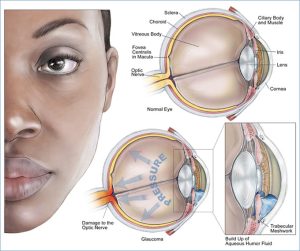15-Mar’12, 10:15pm
Today I visited my eye doctor; he said it might take approximately 6 more months for me to get my complete vision back in my right eye. It’s becoming difficult to see with my left eye.
19-Mar’12, 4:30am
I woke up suddenly because I had a dream where it was all dark and I couldn’t see anything. It startled and jolted me out of my sleep. I’m worried about my left eye, the vision is deteriorating. The doctor says it’s some corneal problem. Only replacing the cornea will bring back my vision. A similar thing happened in my right eye and I lost vision.
It all started 2 years ago. I was a happy-go-lucky person and enjoyed my school days. One day I was coming back from school and suddenly there was an explosion from a road side shop. Dirt and some sharp objects hit my face and few of them injured both my eyes.
I was taken to the hospital and treated. After a month I was left with partial vision in my left eye. The vision in my right eye was completely gone, due to an infection following the injury. Doctors gave me hope saying that replacing the cornea will bring back the vision in my right eye. But they also said that the vision in my left eye will gradually reduce with time. I rejoiced that the cornea can be replaced, but when I came to know that I have to wait for it, I wondered how long it would take to receive one.
25-Mar’12, 9:25pm
I inquired about eye donation. That’s when I learnt how it all works – they take the cornea of a person who has pledged his or her eyes. This can be done only after their death. I felt sad I have to wait for someone to die. It is sad that so many people die every day and their eyes cannot give some one sight if they haven’t pledged them.
15-Apr’12, 6:15am
Today I have to visit my doctor. I will know precisely when they will operate on my right eye. I’m tense and hope they don’t delay it further.
15-Apr’12, 9:45pm
The doctor said they would probably operate on my right eye in the first week of July. Now they receive more eye donations from people, as they are more aware of the need. Once I regain my vision, I will contribute some of my time and work for building awareness. Millions of people are blind and are waiting to regain their vision. If only everyone would pledge their eyes, there will not be anyone missing out on the beauty of nature and their independence.
30-Apr’12, 11:30pm
Now it’s become difficult for me read or write. I read one or two lines and my left eye starts paining.
15-May’12, 1:00pm
I visited my doctor today. The vision in my left eye has completely deteriorated.
25-Jun’12, 11:00am
I can’t resist writing. I can barely see my diary. I have to take my mother’s help. I’m tense, yet I look forward to the days after my surgery. I hope to read and write well and also be able to do everything on my own. I want to study and make a career, while leading a normal life, just as the others.
“Excerpts from the diary of a child”







